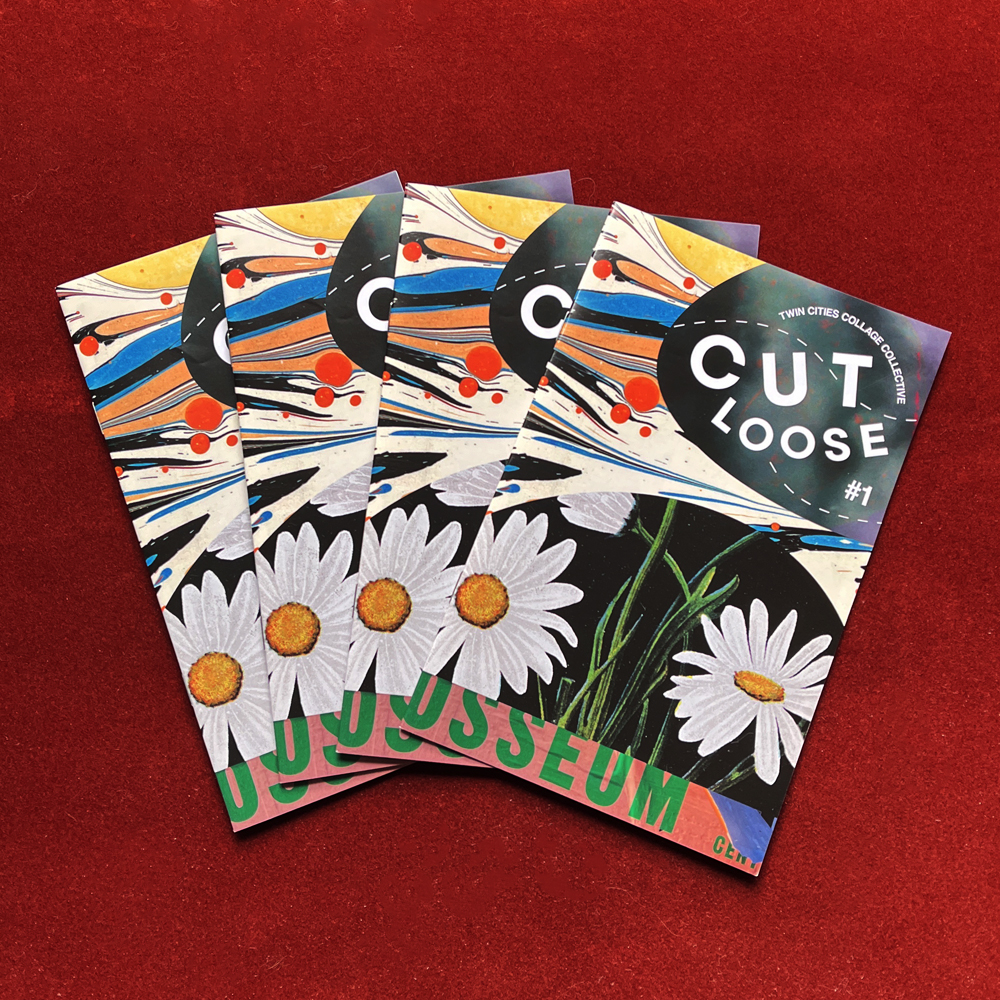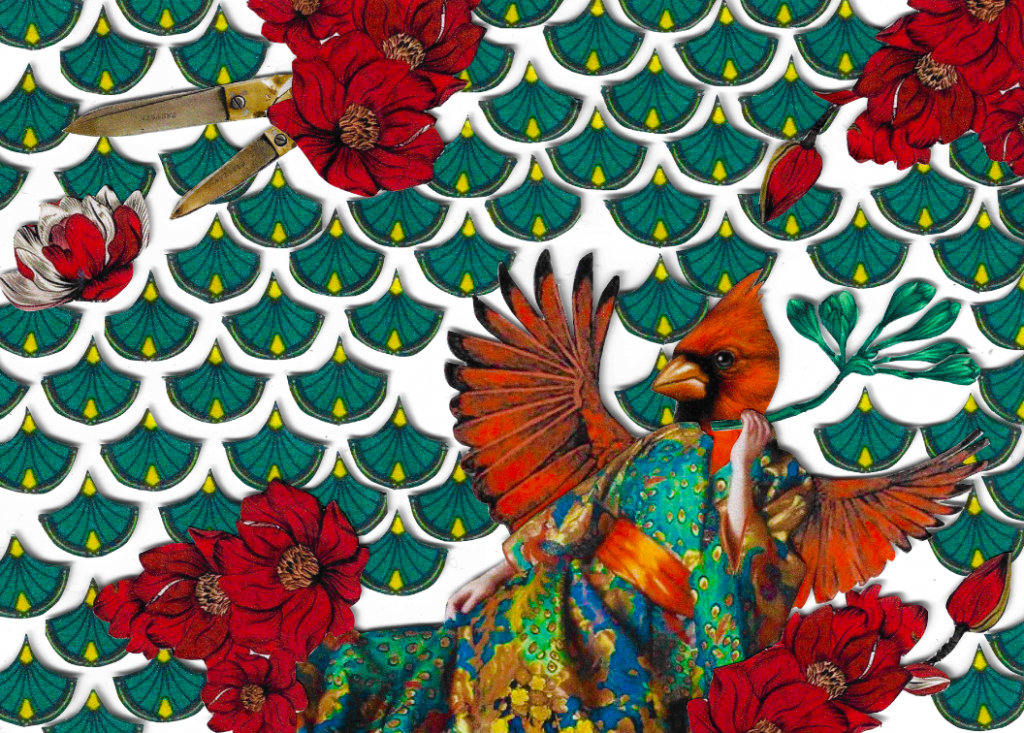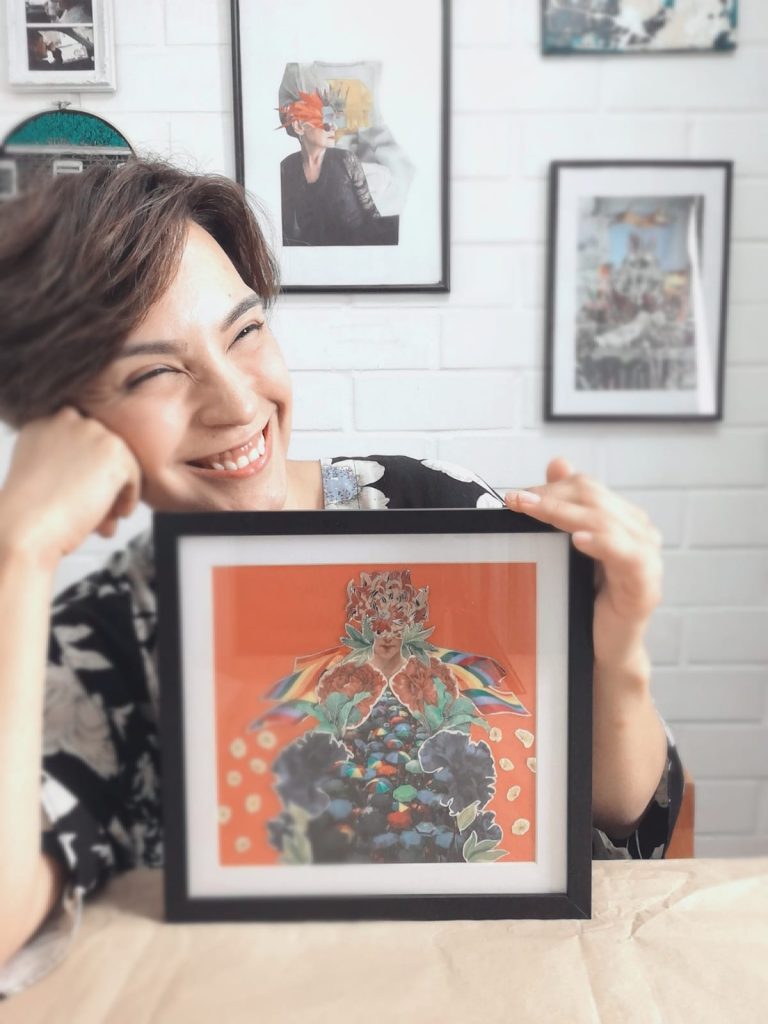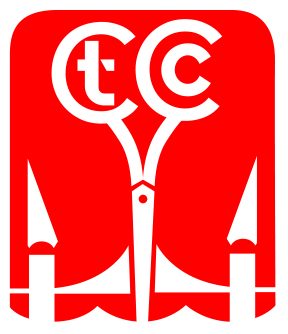Interview: belentheartist
“I’m an artist that mainly works with collage and mixed media. I have six years of self-taught career and four of them are exclusively dedicated to my artistic work. I’m a political scientist who besides developing social research and also worked in events and exhibitions. In parallel, I specialized in oil, acrylic, watercolor, and collage, the latter being the one I enjoy the most. Keeping the craft of constantly creating new works, now I focus on sales of unique pieces and the development of commissions, also sharing the love for art through my podcast Art Notes. BelenTheArtist was born as a constant conversation through the language of popular images and icons around life’s stories. As a technique, collage takes the simplification of collective ideas and allows them to be contrasted uniquely, thus inviting the exploration, reinterpretation, and transformation of ideas.“









How did you get started in the medium of collage?
To be honest, it was an accident. About 2 years ago, I had a lot going on and in a natural attempt to relax and clear my mind I ended up grabbing some Vogue magazines I had around.
I remember using paper, acrylic, and markers, and being amazed by the flexibility and originality of the result. Very pop-art, which is not my forte – I am usually drawn to oil painting and watercolor. From that time on, I was in love.




What subject matter are you drawn to in other art or media and how does it relate to the art you create?
I pay attention to reinterpretations and redefinitions. For example, Miriam Cahn’s paintings are fundamental to understanding the position and challenges of women today. Just by “re-painting” classical works with freedom and honesty, she inspires many to be braver about art, and with others. I try to do that in my work, to use and mix elements in an attempt to show that there is more within us in terms of strength and character. Surrealism allows me to bend the reality of the eye and transform it.
Another example is Lachapelle’s reinterpretation or reduction of The Last Supper. And I’m referring to the wooden mannequin hands, not the actual photographs. The artist was capable of reducing reality to its simplest representation. When I saw it, I remember just staring at it in the museum with a sensation of profound understanding towards what an artist’s vision can achieve without forgetting this amazing history that precedes us.










Is there a ritual or habit you perform before creating, or do you just jump right into it?
Something that has become part of the process is that I put into words the subject matter, intention, and use of symbolism within the piece. I remember that at first, I used to make 5 collages a day, and after a week I would hate them. Because they were merely studies, and I realize that I just made them in order to feed social media hunger. Now I try to enjoy and savor the process so it makes more sense to me along the way.
This change of perspective is something I also apply to social media. Just as I meet TCC, I now used Instagram to connect with artists and to focus on the impact of art. Because I believe that there are so many of us that enjoy it, so we shouldn’t be struggling alone in our studios all day.
But, I think all of us can relate to the spontaneity of inspirations, which is my natural way of working with stand-alone pieces.




How do you feel about collaboration? Is there a collage community that is local to you?
I’d love to do more collaborations. I’ve been lucky enough to have friends that are artists as well but from different media. So we have mixed collage with watercolors. And yes, here in Chile there are a few collectives that I know. They look for platforms as galleries and ways to promote their work, for which artists are always grateful.








How do you feel your work has progressed during your time as an artist? Can you think of any milestones or times where you finished a piece and knew you’d reached a milestone?
I think that my work is never quite finished because I have this constant feeling of not knowing enough about compositions or the rules in general. That is something I believe comes along with proper education for example. And I believe that’s the reason why I’m usually curious about other artists’ work and processes.
Today, I know that my milestone moments and my growth – even if slow – come from this curiosity. I know that my composition has shifted a lot from my first works, which used to be very messy. And I know that is not just by chance, it is because I have managed to understand what I want to show, whereas at the beginning I was full of emotions and focused on the moment of inspiration. I know now that compositions come along with intention towards the viewer. In the beginning, I only did conversation pieces, so when I decided to change towards specific subjects and portraits, my relationship with work became less stressed.
Recently, I made a series when I changed from paper as a background to glass, and I can’t get enough of how the material changed the intention of the piece. I’m very excited to show the original work, mainly for the balance of light that it brings to the collage. The change in materials is definitely a milestone of 2022 for me.










Are there any creative endeavors you’d like to explore that you haven’t yet tackled?
Collaborations are definitely one that I want to keep doing this 2022. To be able to learn from and with other artists is very rewarding. Same with my podcast. Art Notes has allowed me to have inspiring conversations with artists I follow and I’m a fan of.




When assembling a piece, what creative elements are most important to you?
Recently, I need to have a clear view on perspective, I’m trying to add the idea of movement to the pieces. Is very different from composition for me. When I get to the final assembly, I usually know where everything goes, cause I’m done with the color and position test.
But despite all preparation, some last minute changes and decisions define this idea of movement. If I lose the initial study and reference the symmetry goes away and some of the pieces too. So to be focused on these details has become a priority at the moment of putting everything together.








Do you seek out inspiration or does it come to you on a whim?
I seek it. Subject matters come easily, but turning that idea into a visual piece is a journey. I’m recently trying new styles, like the 1910’s American style. So I can think of flowers and decide what images I want to uses, but to decide how I use them, emotions, and the impact on the viewer, at least for me takes time to get right.










Does your work have any specific relationship to art history or do you tend to select imagery based on aesthetics?
I have a huge amount of appreciation towards XXVII Flemish painters and recently I enjoy the effortless beauty of art deco, especially its architecture.
In the beginning, I used any magazine I had around, it made my work look contemporary and attached to everyday struggles, which I loved. But with time I learn how to look for material, types of magazines, and book prints. So I have more control over the way I portray the message. The wonderful thing about collage is that we can use people’s preconceptions of images, colors, and textures to help the idea get through the canvas. So the reinterpretation of love, for example, may be different if we use a 1950’s American magazine, instead of a contemporary European one.








Many of your collages include plants and foliage. Do they hold a particular significance for you?
Yes, and I usually wonder if I use too much of it. I try to put some elements of life in the work. So when I use leaves or flowers outside the main figure is to have a presence of life and hope to the piece. Instead, when it has direct interactión with the main figure, like when I use flowers on the heads and bodies, the idea is to reflect growth, creation, and creativity. I tend to reflect on women’s history and to portray the idea of unknown potential and limitless growth. I still don’t know if I succeeded, but it is a continuous subject that I see in reality every day.




What has surprised you the most in your career as an artist? Have there been hardships or disappointments?
The duality of art within the artist surprises me, and I don’t think it is bad. It appeared to me as a new experience. I’ve been meeting artists and having conversations about the work for months now. And there is a duality between the love we have towards what we do, and the place we think we have in the world. Some decide their place is in a gallery, others in a shop or teaching. But wherever that place is, we struggle with appreciation and approval. And I’ve come to realize this is a fact of our lives for good or bad. And even more, we don’t have control over it.
The beautiful lesson I’ve gathered from this conversation is that we shouldn’t let it control the way we see the work we love, being this is the harders part. So with effort, I’ve to stop worrying about social media numbers, I worry about my growth and connection to other artists and art itself. What surprised me is that it is more rewarding for me by using this new perspective, than before. And I think this speaks volumes about the artistic community.


What art advice do you give others that you don’t necessarily follow yourself?
To talk about art. It is very hard for me to speak about art with people under the presumption it will be boring, but I love to talk and learn about it. I have the feeling that If I were more outspoken about what I do, I would have met more artists like me before now.




When was the last time you saw a piece of art that really resonated with you? Do you seek out a variety of creative experiences?
A few years back I visit Honduras and I was amazed by the culture and nature. From the sky, the colorful nature and kindness of people, l fell in love with it. It was definitely an “oh, wow” moment. I do seek to have different experiences and be exposed to a range of media and styles, even if Covid has made it a little difficult.




What purpose would you like your art to serve? What sort of feeling are you trying to convey through your art?
The emotion has changed along the way. At the beginning, I wanted to understand myself. So I told stories through conversational pieces. Today, I’m just an explorer. I try to use different materials within paper and different ways to use them, trying to polish the techniques. In terms of message, is really the same, I’m reinterpreting woman history and reconciling it with our challenging present.




Do you ever have any worries or hang-ups about sharing your work with others? Do you have works that only your eyes have seen?
Absolutely, I usually show the collages I feel comfortable with, and the drawings and paintings still end up in the back of the studio. It took me a while to show what I do because I felt judged and vulnerable. Now I have this feeling of honesty. My work gives me strength through hard times and allows me to celebrate the good moments. Sometimes, the act of creating is a struggle, but in the end, is immensely reconverting.




Who are some contemporary artists or creative colleagues that you’re always excited to see work from?
I enjoy the work of a collagist named Sasha (@oddcantaloupe), the painter Anne-Louise Ewen (@ewen_paintings) who makes colorful watercolor portraits, as well the Colombian artist Nathalia Velasquez (@puapualena) who makes beautiful fee illustrations with mixed media, and finally, Elissa Lincoln (@elissa.lincoln) who makes delicate paper sculptures. All of their work is inspiring and never ceased to amaze me. As in contemporary artists, I find Miriam Cahn‘s body of work brave and necessary to our times, and the poetry installations of Robert Montgomery are moving and an invitation to reflect on ourselves.




You have an exciting podcast called Art Notes! How did it get started?
I always find myself trying to understand the message and intentions of the artist behind the work. I listen to endless explanations of classical works and find them more than interesting. So when I see many beautiful works on social media and find that the intentions were missing, I was surprised. Even though I lack in this aspect too, I believe that If painters and collagists were good with words we wouldn’t do what we do.
That’s when I began to contact a few artists that I admire just to have a chat, and their response was so welcoming that I felt the need to share their enthusiasm. It blew my mind that people I’ve never met nor have ever heard of me were open to speaking about something they care about so much about. And that’s when the podcast came about. In March, the second season of Art Notes comes out and I’m thrilled to share these conversations. Each artist shares their journey but also gives us advice about the work and business surrounding the art world.










What have you learned from talking with other creatives?
There are so many, but here are some. I’ve learned that we all struggle, and I found a lot of comforting understanding that. Talking with other creatives reminds me of the importance of treating the work as a job, dedicating time and space every day.
Many prove to me with absolute transparency how their art was 30 years ago and how it has improved over time because of the constant work, so if you look to get better you need to keep going and not be discouraged. But at the same time, I needed to identify my shortcomings and find other artists that can help me out when a commission or a specific idea needs more dedication. Not because we lack a specific set of skills or because our vision is impossible – collaborations can become great adventures.
Art Notes has artists from different countries and media, and I was surprised to see how much we all have in common.




Where can folks listen to the podcast?
It’s available on Spotify as Art Notes by belentheartist. There you can find descriptions of the artists who have been interviewed and ways to find their work, support them and get in contact in case you want to ask them some more questions. You can find direct links on @belen_theartist on Instagram.
